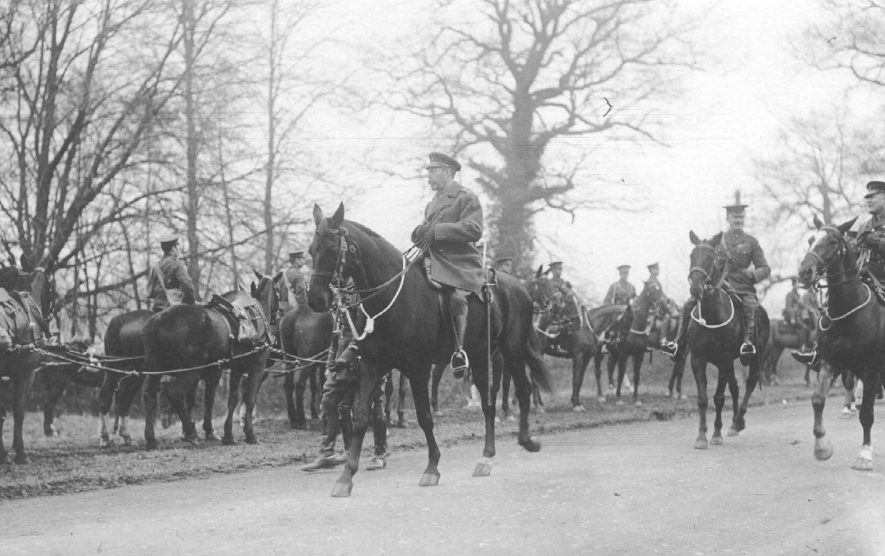
Coventry Society member, Peter James, tells us about Coventry’s role in the First World War. Peter writes……
In the early months of 1915 thousands of troops entered the Coventry area. By the beginning of March an estimated 17000 soldiers were living in the area. Most of them were billeted and living in private houses. They were preparing to leave for action in Gallipoli.
The photograph above and an article appeared in the Leamington Spa Courier on the 12th March 1915. It was the only newspaper to feature this story. Another local newspaper blasted the Courier for divulging the movements of the king and the division of men. They replied that a telegram asking them not to report the inspection had been received too late to prevent publication of the article.
From 4th August 1914 when George V declared that the country was at war, until March 1915 British munitions output had increased by 338% under the control of the War Office. Even this was insufficient to meet demand so the government established a Ministry of Munitions (MoM) in May 1915 under the direction of David Lloyd George. He reached an agreement with trade union representatives where semi-skilled and non-skilled workers could replace skilled labour in “controlled establishments” until hostilities ceased. Coventry had 14 of these businesses.
The Coventry Armaments Output Committee was formed to tender for contracts then divide the work between the large firms. Smaller firms organised and managed their own businesses. David Lloyd George sent a letter to Malcolm Pridmore the Mayor of Coventry on 10th June 1915. The mayor responded and also sent a letter to manufacturer’s representatives. These were published in the Coventry Herald on 18th June 1918.
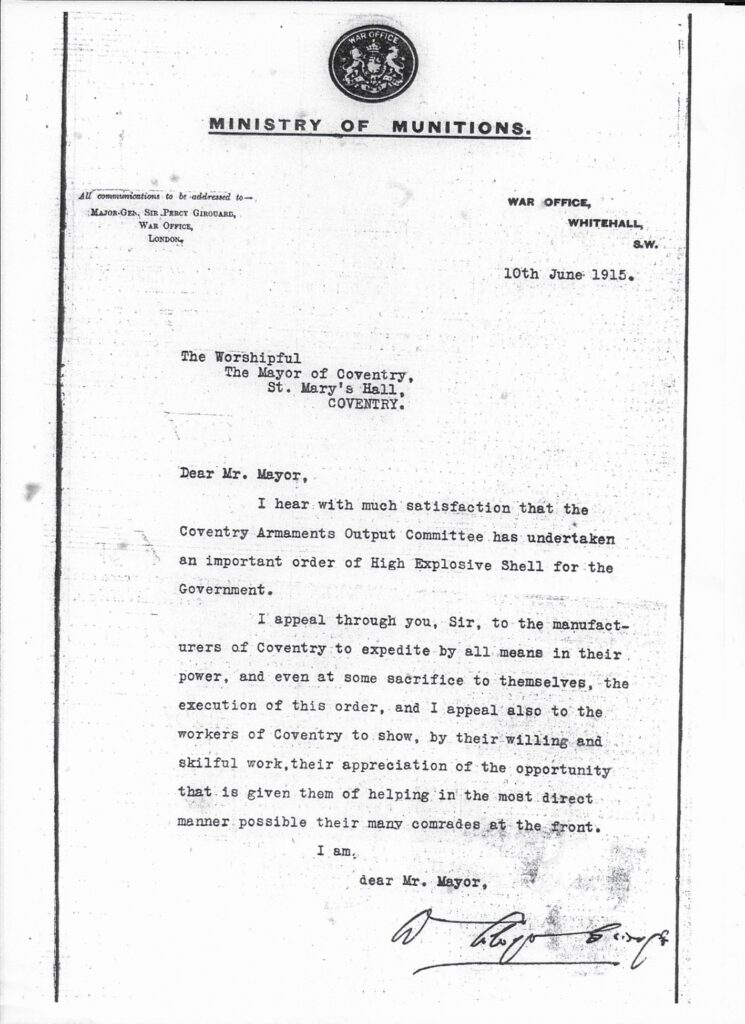
Mayor’s response to David Lloyd George
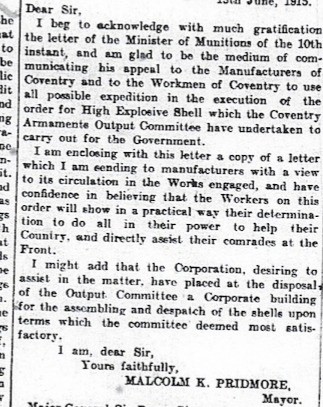
Mayors Letter to Manufacturers
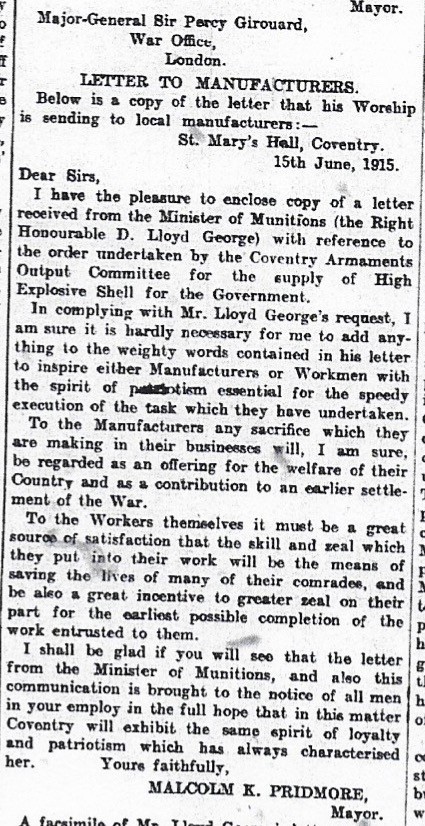
King George V visited Coventry again on 22nd July 1915 and it appears that on this occasion the media didn’t divulge the King’s movements. He visited a number of factories in Coventry but didn’t spend long in any of them, until he reached the Rover Works where he met the Members of the Armament Committee and the Members of the Management Sub-Committee. He then left by car for Coventry railway station where he caught a train bound for Birmingham.
By September 1915 there were 715 major British “controlled establishments” run by the Ministry with 14 of those being from Coventry. Between 1914 and 1918 it’s believed that 166 firms in Coventry were employed making arms and munitions.
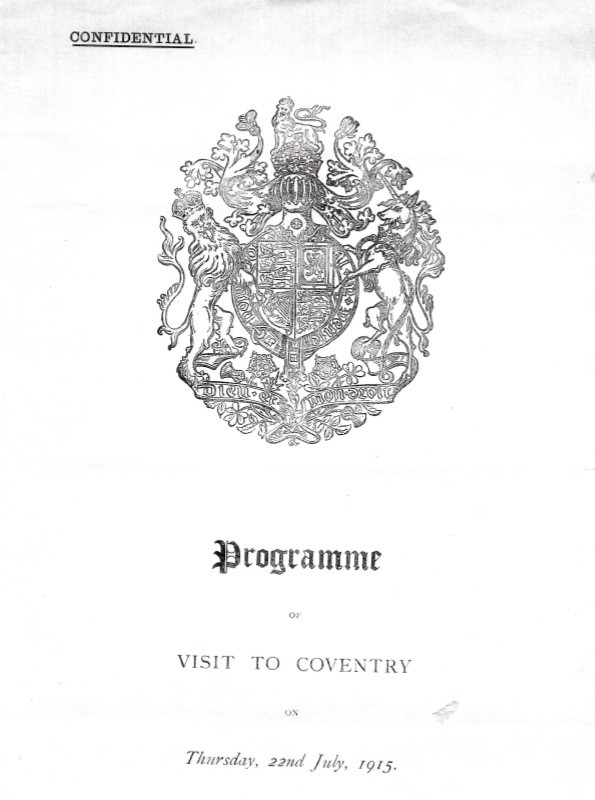
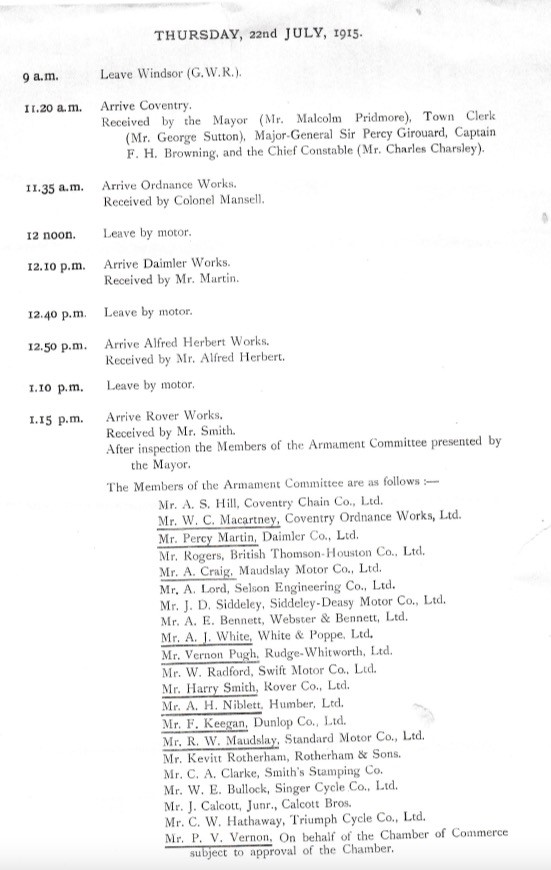
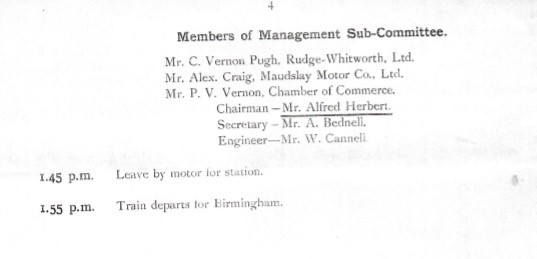
Programme reproduced with kind permission of the Coventry Archives
